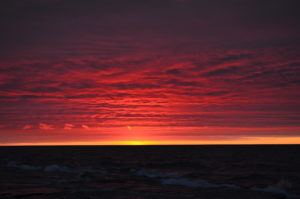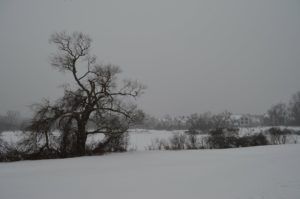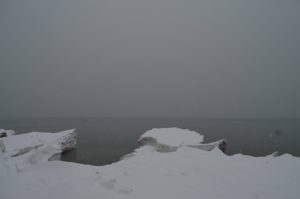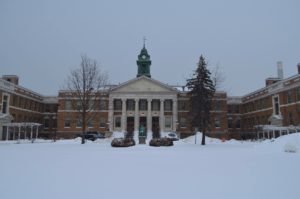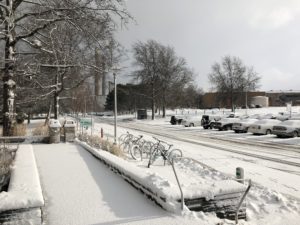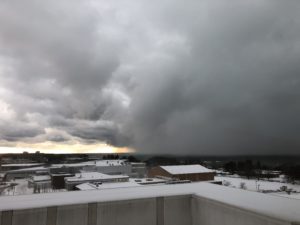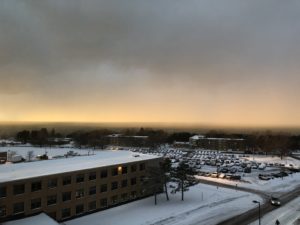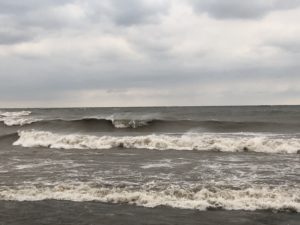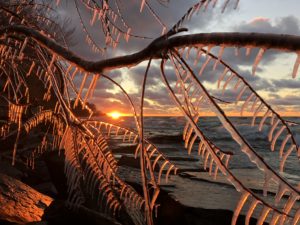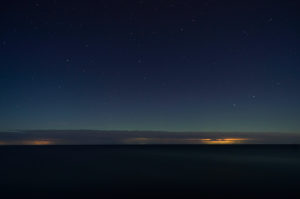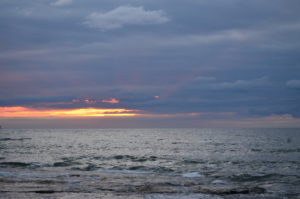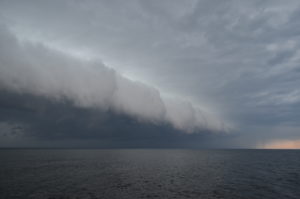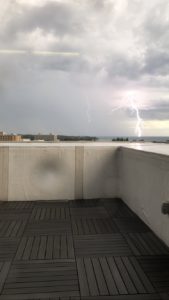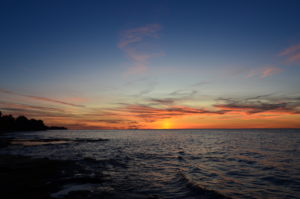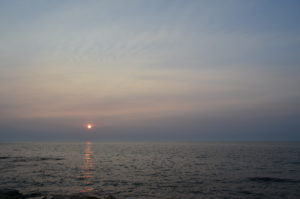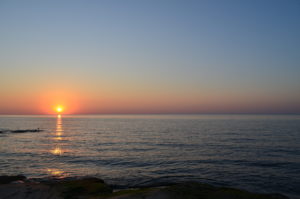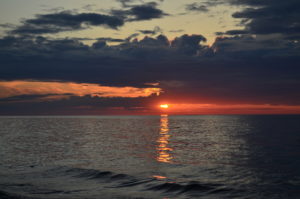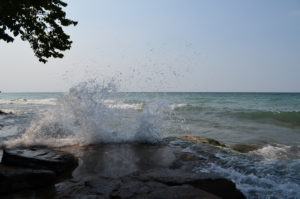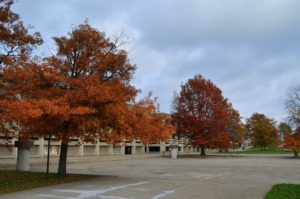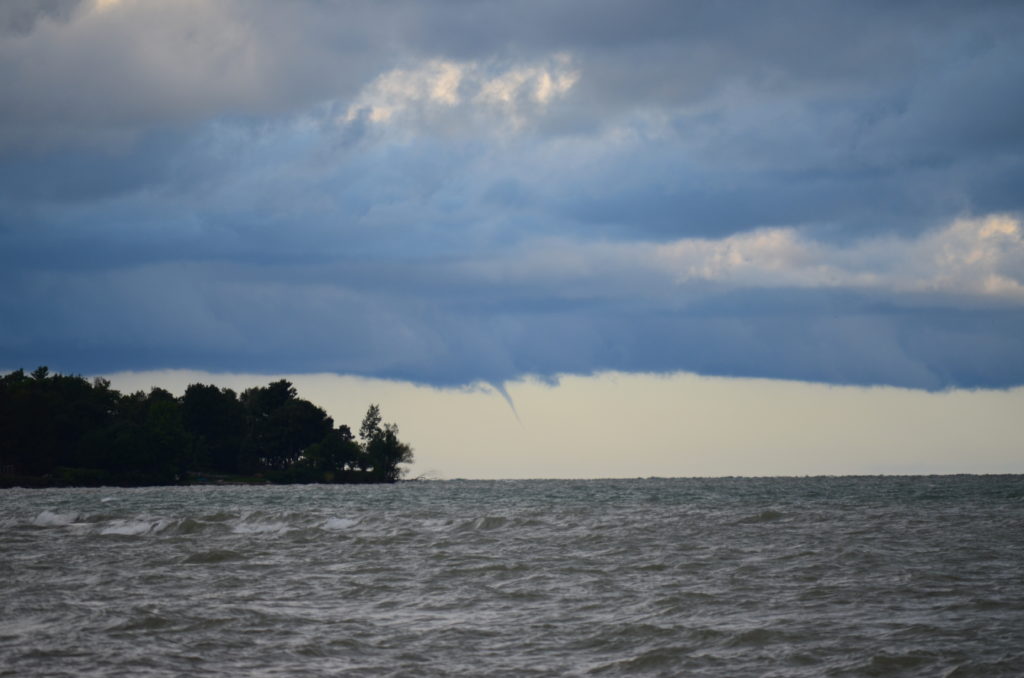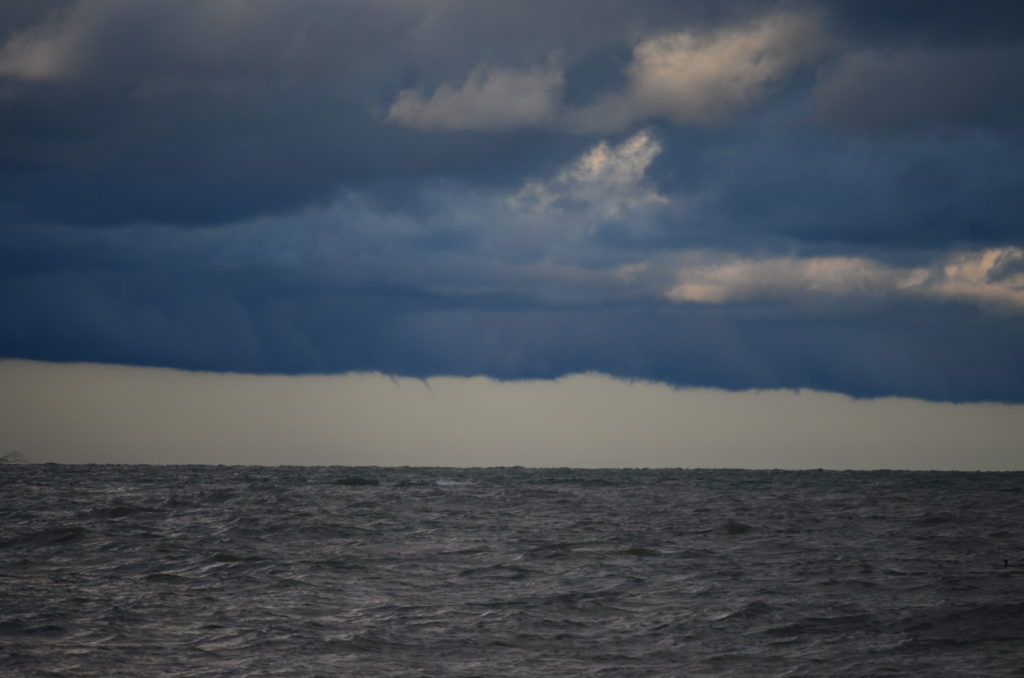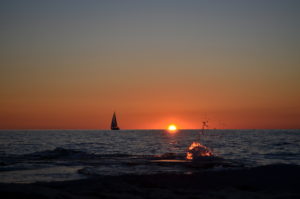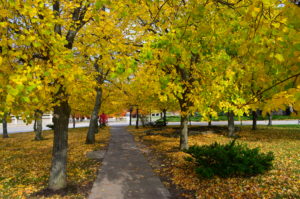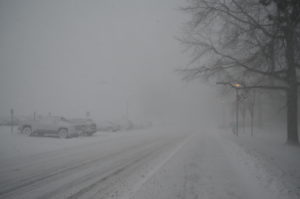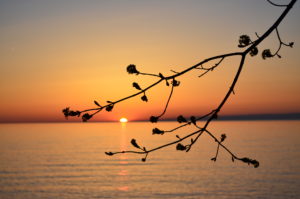Hey Oswegonians! I apologize for the lack of posts – it’s been a long semester thus far for me. Try taking Synoptic Meteorology, Mesoscale Meteorology and a statistics class all at once…
Anyhow, if April showers bring May flowers, what do March nor’easters bring?
Answer: Snow, wind, and coastal flooding. The Northeast has seen three such storms in the past two weeks! While this many storms in such little time is not unheard of, it can cause a tizzy for those who reside in the area. In Oswego, while the area has not seen as much snow as places further east have, the storms have still had an impact on daily operations.
The first storm, which occurred on March 2, dropped around 7″ of snow on campus. Inland, nearby Fulton reported 14″! The storm caused nearly every school and college in central NY to close, however Oswego remained open. We’re die-hards around here, right?
The second storm’s snow, which impacted New England on Wednesday, actually missed Oswego. However, snow fell due to the system’s wrap-around moisture the next two days. Oswego itself saw a couple of windy days and 2-3″ of snow, with higher snowfall inland once again.
The third storm, ongoing as I type this post, is almost a carbon copy of what happened last week. Greatest New England snowfall happened yesterday, however our area is seeing the wrap-around moisture with several inches likely to fall before all is said and done tomorrow.
That’s three nor’easters, folks! And we may not be done just yet. The same pattern that has been around the past couple of weeks looks to continue through about the end of March. That being said, it is not a guarantee that the Northeast sees another nor’easter. Here’s to hoping for some more spring-like weather in a couple of weeks!



